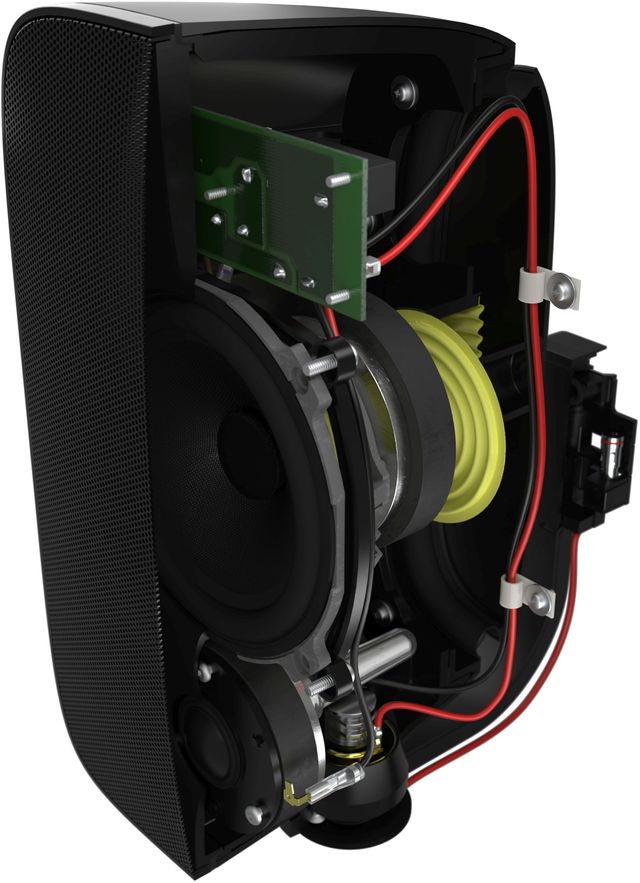Discover Pandipedia
Pandipedia is the world's first encyclopaedia of machine generated content approved by humans. You can contribute by simply searching and clicking/tapping on "Add To Pandipedia" in the answer you like. Learn More
Expand the world's knowledge as you search and help others. Go you!

According to the article, Google[1] is offering virtual machine instances powered by Nvidia H100 GPUs[1] and has introduced the Cloud TPU v5e[1], the latest version of its Tensor Processing Unit AI accelerators[1]. The article also mentions that Google will be offering different virtual machine configurations ranging from one TPU chip to over 250 within a single slice[1]. Therefore, based on the information provided, it can be inferred that Google has multiple GPUs and TPUs available. However, the exact number of GPUs and TPUs that Google has is not explicitly mentioned in the article.
Let's look at alternatives:
- Modify the query.
- Start a new thread.
- Remove sources (if manually added).
- Request a manual search from our human research team.
Let's look at alternatives:
- Modify the query.
- Start a new thread.
- Remove sources (if manually added).
- Request a manual search from our human research team.
Get more accurate answers with Super Search, upload files, personalised discovery feed, save searches and contribute to the PandiPedia.

Elephants are renowned for their complex social structures, which are primarily matriarchal. These structures revolve around tightly-knit family units that promote cooperation, emotional bonds, and survival within various environmental contexts.
Matriarchal Leadership

At the center of each elephant herd is the matriarch, typically the oldest female. This matriarch plays a critical role in leading the herd, making key decisions about foraging, migration, and social relations. Her accumulated wisdom is indispensable, especially in finding food and water, while also imparting knowledge to younger herd members[1][11]. The matriarch's dominance in the social hierarchy is not just due to her age but also her experience and social skills, which earn her the respect of the entire group[1][3].
Herd Composition

An elephant herd typically consists of several generations of females, including the matriarch, her daughters, and their offspring[4][10]. Female elephants generally remain with their natal herds for life and share strong familial bonds characterized by cooperation in nurturing and protecting the young. Allomothering, where non-maternal females assist in raising calves, is common and ensures that all young elephants receive the necessary care and education[2][3][5]. This collective rearing is vital for the survival of the calves, as it increases their chances against predators and environmental stressors.
Male Elephants and Social Dynamics

In contrast to the stable female family units, male elephants adopt a more solitary lifestyle or form temporarily cohesive bachelor groups. Young males typically leave their natal herds between the ages of 12 and 15. These bachelor groups, often transient and marked by competitive hierarchies based on size and age, serve as a context for young males to socialize and learn necessary behaviors in preparation for adulthood[3][5][9]. Although males maintain a degree of independence, they occasionally return to their familial herds to interact and ensure their family's well-being[5][10].
Emotional Bonds and Mourning Behavior

Elephants exhibit profound emotional connections within their herds. When a member dies, the herd engages in elaborate mourning rituals, which may include touching the deceased with their trunks, covering the body with earth, and pausing in silence to show respect. This behavior underscores the strong emotional bonds and social cohesion within the group[8][11]. Additionally, elephants are known to revisit grave sites, displaying signs of grief and recognizing the remains of dead relatives[10][11].
Communication and Social Learning

Elephants possess a highly developed communication system comprising vocalizations, body language, and tactile signals. Their ability to produce low-frequency calls, which can be perceived over great distances, helps maintain connections between individuals separated by considerable space[2][5][6]. These communication methods facilitate social learning, where younger elephants learn critical survival skills from their elders, including foraging techniques and social behaviors essential for thriving within their complex social system.
Fluidity of Social Structures

While matriarchal herds are the norm, elephant social structures can be fluid. Elephants adapt their social dynamics based on environmental factors such as resource availability. In areas with plentiful food and water, herds can grow larger, while in less hospitable regions, they may break into smaller family groups or bond units to enhance survival prospects[4][5][10]. This adaptability demonstrates the resilience of elephant herds as they navigate changing landscapes and social challenges.
Conclusion
The social structures of elephant herds are intricate and multifaceted, characterized by matriarchal leadership, deep emotional bonds, and cooperative parenting. The matriarch’s role is crucial for the herd's survival, fostering unity and guiding younger generations. Male elephants adopt different social dynamics, often leading solitary lives after leaving their natal herds. Elephants' rich emotional lives are evident in their mourning rituals, while their communication and social learning abilities highlight the complexity of their interactions. Understanding these social structures is vital for conservation efforts aimed at preserving elephant populations and their intricate social fabric.
Let's look at alternatives:
- Modify the query.
- Start a new thread.
- Remove sources (if manually added).
- Request a manual search from our human research team.

People on Instagram use the word "Finsta" to refer to a fake Instagram account where they can post more real, candid content to share with only close friends[1]. This allows users to share a goofier, less-edited version of themselves and connect with friends on a more authentic level. The term "Finsta" is a shortened term for Fake Instagram[1] and is typically used by teens and young adults[1]. The concept of a Finsta account allows users to step away from the curated and edited content that is often associated with their main Instagram account.
Let's look at alternatives:
- Modify the query.
- Start a new thread.
- Remove sources (if manually added).
- Request a manual search from our human research team.
Bing[1]'s Deep Search[1] is an enhanced feature that aims to provide more relevant and comprehensive answers to[1] complex search queries[1]. It incorporates GPT-4[1], a state-of-the-art generative AI LLM[1] (Large Language Model[1]), to expand search queries into more detailed descriptions of the ideal set of search results. Deep Search utilizes GPT-4 to understand the user's intent and generate a comprehensive description that captures their expectations accurately.
This expanded description helps Bing[1] understand the type of information the user is seeking, allowing for a deeper exploration of the web. Deep Search[1] goes beyond the regular search results[1] by searching for pages that match the comprehensive description[1], even if they don't explicitly contain the original keywords. It considers a variety of signals, such as relevance, level of detail, credibility of the source, freshness, and popularity, to rank the results and present a curated list of[1] answers that are more likely to satisfy the user's query.
It's important to note that Deep Search[1] is an optional feature and not meant for every query or[1] user. Bing[1] will always return regular search results[1] in less than a second. Deep Search[1] is currently being tested and improved, and it is available to randomly selected small groups of users[1] worldwide. Feedback and suggestions on how to enhance Deep Search are welcomed.
Thus, Bing[1]'s Deep Search[1] is a feature that uses GPT-4[1] to provide more comprehensive and specific answers to complex search queries[1], offering a deeper exploration of the web.
Let's look at alternatives:
- Modify the query.
- Start a new thread.
- Remove sources (if manually added).
- Request a manual search from our human research team.
Current challenges in international relations include escalating geopolitical tensions, particularly due to Russia's aggressive stance, which has prompted a reevaluation of collective security frameworks established post-1945. As the war in Ukraine continues, the implications for international governance and security structures are profound, leading to heightened rhetoric regarding nuclear capabilities and deterrence strategies[1][4].
Additionally, the U.S.-China relationship is marked by intensifying confrontations, compounded by issues such as trade disputes, technological competition, and climate change. These factors contribute to rising uncertainties within global alliances and the shifting nature of diplomacy, which must adapt to an increasingly multipolar world[2][3].
Let's look at alternatives:
- Modify the query.
- Start a new thread.
- Remove sources (if manually added).
- Request a manual search from our human research team.
Get more accurate answers with Super Search, upload files, personalised discovery feed, save searches and contribute to the PandiPedia.

Babies find it easier to fall asleep in the car due to the combination of factors such as the rocking motion, sedentary environment, lack of engagement in the back seat, sound, motion, and setting. The rocking motion, constant motion of the car, and low rumble of the engine[2] can make them feel secure and cozy, similar to the movement of the uterus. The car seat can also feel secure like a swaddle, and the scenery inside the car provides a calming, familiar environment for sleep. Infants need a lot of sleep and it's likely that nap time will coincide with a car trip[1], making it easier for them to fall asleep[1].
Let's look at alternatives:
- Modify the query.
- Start a new thread.
- Remove sources (if manually added).
- Request a manual search from our human research team.

'Attention Is All You Need' is a seminal research paper published in 2017 that introduced the Transformer model, a novel architecture for neural network-based sequence transduction tasks, particularly in natural language processing (NLP). This architecture relies entirely on an attention mechanism, eliminating the need for recurrent or convolutional layers. The authors aimed to improve the efficiency and performance of machine translation systems by leveraging parallelization and addressing long-range dependency issues that plague traditional models like Recurrent Neural Networks (RNNs) and Long Short-Term Memory networks (LSTMs)[1][6].
The Transformer consists of an encoder-decoder structure where the encoder processes the input sequence and the decoder generates the output sequence. Each encoder and decoder layer features multi-head self-attention mechanisms, allowing them to weigh the importance of different tokens in the input sequence[2][5]. This model achieved state-of-the-art results in benchmark translation tasks, scoring 28.4 BLEU on the English-to-German translation task and 41.0 BLEU on the English-to-French task with significantly lower training costs compared to previous models[5][6].
Moreover, the paper predicts the potential of the Transformer architecture beyond just translation, suggesting applications in various NLP tasks such as question answering and generative AI[1][3].
Let's look at alternatives:
- Modify the query.
- Start a new thread.
- Remove sources (if manually added).
- Request a manual search from our human research team.

JBL Boombox 3
A large portable Bluetooth speaker with solid bass, IP67 water resistance, and over 29 hours of battery life, making it suitable for the outdoors[4].
Ultimate Ears Wonderboom 3
A compact, lightweight speaker with a 360-degree sound design, 14 hours of battery life, and an IP67 rating, ideal for pool parties[2][7].

Sonos Move 2
A strong outdoor speaker with crisp sound, 24-hour battery life, and seamless Wi-Fi/Bluetooth switching; it also has voice assistant support[4][10].

JBL Charge 5
Versatile and powerful, this IP67-rated speaker offers excellent audio quality and doubles as a power bank with a 20-hour battery life[4][9].
Klipsch AW-650
Heavy-duty outdoor speakers with superior sound quality and construction, featuring a 6.5-inch woofer for deep bass and an IP rating for weather resistance[10].
Polk Audio Atrium 6
Features dual drivers for clear sound and powerful bass; it's designed for extreme weather and can fill large outdoor spaces[10].

Anker Soundcore Boom 2 Plus
A robust speaker with a 140W output, IPX7 waterproof rating, and customizable EQ through a companion app, ideal for outdoor gatherings[7].

Tribit StormBox Micro 2
A small speaker with impressive sound quality, 12 hours of battery life, and an IP67 rating for water and dust resistance[2][6].
Bose SoundLink Flex
A portable speaker with an IP67 rating, great sound quality, and built-in microphone for calls, making it ideal for outdoor use[8].

OSD Audio AP650
Passive speakers with a clear sound ideal for larger outdoor setups; fully weatherproof and designed to withstand outdoor elements[3][10].

Victrola Rock Speaker Connect
A rock-shaped Bluetooth speaker that is easy to set up, features solar charging, and provides decent sound for casual listening[3].

JBL Flip 6
A compact and durable speaker with an IP67 rating that delivers powerful sound and long battery life, perfect for outdoor use[5][8].
Ultimate Ears MEGABOOM 3
Known for its deep bass and robust sound, this portable Bluetooth speaker is built for travel with an IP67 rating[4][9].
Bowers & Wilkins AM-1
Designed for permanent outdoor installation, this speaker delivers high-quality sound and is highly weatherproof with easy mounting options[11].

Dayton Audio IO8XTB
A passive speaker offering superior bass performance and clarity, ideal for those seeking a more traditional outdoor speaker setup[3].
-Offwhite-Background-SOURCE-Amazon.jpg)
Bose SoundLink Max
A powerful portable speaker capable of outdoor entertaining with excellent sound quality, IP67 water resistance, and long battery life[8].
Rockustics AWR-650-SM
Cleverly designed to look like a rock and deliver quality sound while being weather-resistant, perfect for garden settings[11].

OSD Audio BTR805
Rock speakers with built-in amplification and Bluetooth, delivering robust sound while being easy to install without complex wiring[3].
Sony XG300
A compact yet powerful speaker featuring IP67 water resistance and attractive design, great for both indoor and outdoor use[9].
Marshall Middleton
A portable speaker that balances great sound and rugged durability, with a stylish design and good bass response[9].

Sonos Roam 2
A premium portable outdoor speaker with voice control and optimized sound for outdoor environments, offering great versatility[9][10].

Anker Soundcore Motion 300
A budget-friendly outdoor speaker that features a rugged design, customizable EQ, and decent sound quality for outdoor adventures[7].
Let's look at alternatives:
- Modify the query.
- Start a new thread.
- Remove sources (if manually added).
- Request a manual search from our human research team.

Yes, fish bones do provide calcium. Fish bone contains a high calcium content, with calcium and phosphorus making up about 2% of the whole fish by dry weight. Consuming fish bones, especially through canned fish, is beneficial as they become soft and digestible during the canning process, allowing for calcium absorption. For example, half a cup of canned salmon, which includes the bones, can contain approximately 290 mg of calcium, provided the bones are consumed[1].
Furthermore, research indicates that calcium extracted from fish bones is highly absorbable. Studies have shown that this form of calcium can be six times more absorbable than standard calcium carbonate supplements, making it an effective source for maintaining bone health[2].
Let's look at alternatives:
- Modify the query.
- Start a new thread.
- Remove sources (if manually added).
- Request a manual search from our human research team.


_635042276525750000.jpg)









